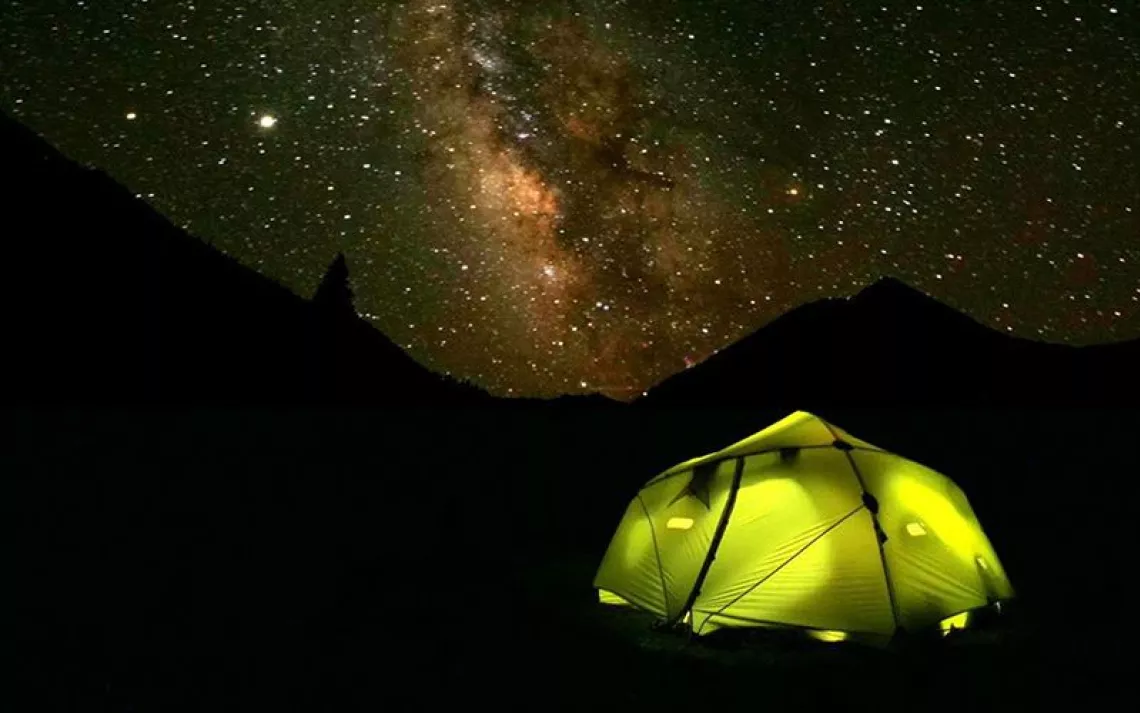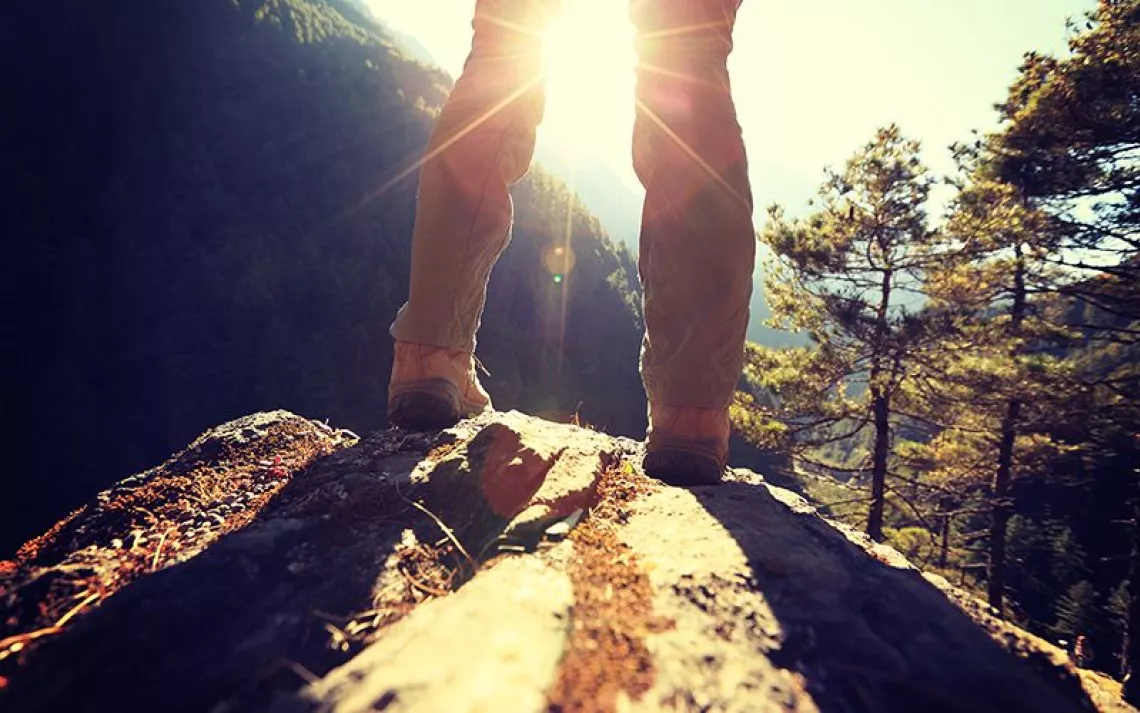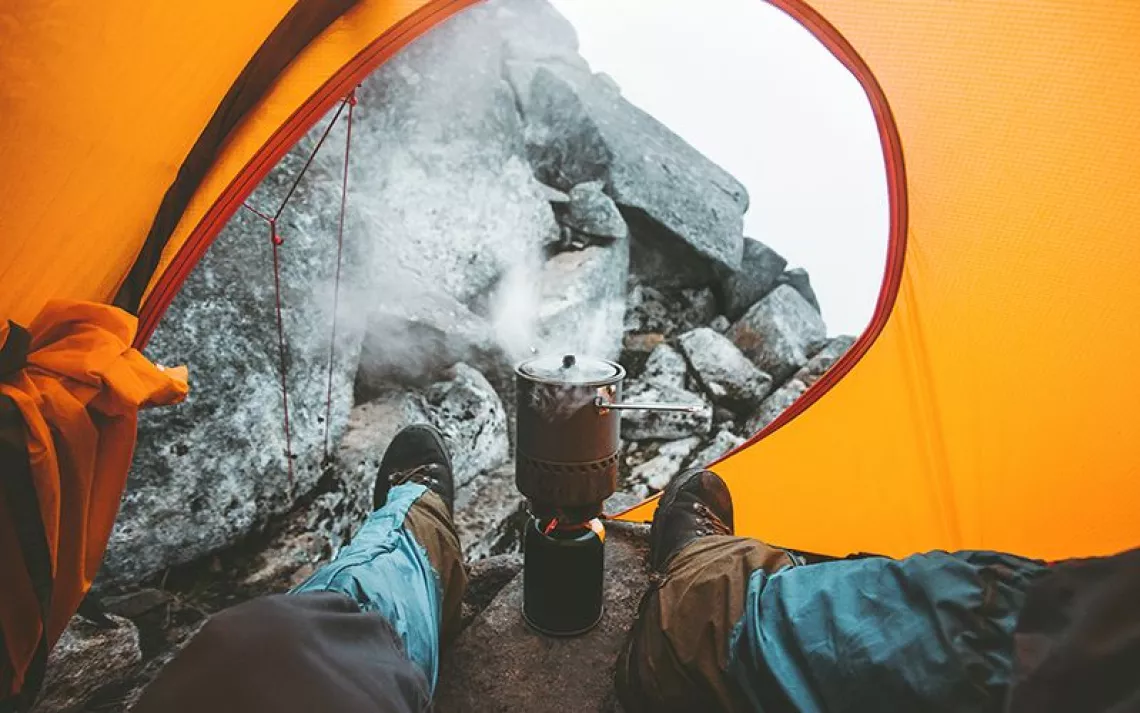9 Ways to Go Backpacking on the Cheap
One seasoned thru-hiker shares his best secrets and hacks

The saying "hike your own hike" is meant to be reassuring—you should be able to pack what works for you, sans judgment. As I learned over the course of three thru-hikes (the Appalachian, Continental Divide, and Pacific Crest Trails), the backpacking market is saturated with pricey gear, but there are plenty of alternatives that won't break the bank.
Clothing
Your duds are in for a hard life on the trail; why spend a fortune on them? Thrift stores abound with sweat-wicking turkey trot tees, fleece pullovers, and items like the 100 percent merino wool sweater I bought for $2—my go-to for chilly nights in camp.
Cookware
Forget the 18-piece camping cook sets and cuisine accoutrements (the accordion bowls, origami plates, and foldable spatulas). Packing a single pot like the $25 MSR Alpine Stowaway keeps your kit inexpensive and light. Pick up a stainless steel spoon from Goodwill for a nickel. Or, forgo cooking entirely—hikers who "go stoveless" eat raw foods or reconstitute instant or dehydrated meals by soaking them for a couple of hours in a peanut butter jar, saving the cost of buying a stove, fuel, and a pot. Then clean up by licking your spoon.
Water Purification
Pump filters like the Katadyn Hiker Pro ($85) are popular—I used one on the AT—but mechanical components can break and filters freeze. I now use AQUAMIRA chlorine dioxide drops—two one-ounce bottles can treat weeks' worth of water and cost $15. Two drops of regular, unscented household bleach (less than $4 a pint) purifies a liter of water.
Sleeping pads
Inflatable sleeping pads are comfortable and pack down small, but you pay for those conveniences; a Therm-a-Rest NeoAir XLite, for example, costs as much as $225. Opt instead for closed-cell foam. Buy a classic THERM-A-REST RidgeRest pad for $20 or an easier-to-fold Z Lite Sol for not much more. Added value comes from a foam pad's toughness and adaptability. Use it as a frame in an ultralight pack or as a sit pad during lunch breaks, and never worry about a puncture. My hiking partner on the Pacific Crest Trail even sat on his Z Lite pad while glissading to keep his butt from getting wet.
Rain Protection
Backpack rain covers cost about $40, but every one I've used has failed. Ditch this "must-have" and line your pack with a trash-compactor bag. Your pack itself will get wet, but, vitally, the rest of your gear will stay dry. They cost less than a dollar a bag, and with care each can withstand a 2,000-mile thru-hike or longer. FROGG TOGGS ($30) and drugstore ponchos (around $7) are inexpensive, albeit less durable, alternatives to $300 high-end jackets. The $100 MARMOT PreCip Eco Jacket treads the middle ground—two got me through the Triple Crown.
Backpacks
One of the best ways to save money is to use a small pack, which limits what else you can bring. Avoid excess features, zippered pockets, and a big, floppy brain. A couple of water-bottle holsters and a single main compartment (like on the $145 ULA Equipment CDT) are all you need. Or you can sew your own pack—patterns from BAG BUFF ($20) and materials from companies like RIPSTOP BY THE ROLL and SEATTLE FABRICS make for cheap, customizable projects. RAY-WAY offers a complete kit ($95, rayjardine.com), and YouTube abounds with helpful DIY advice.
Shelter
Think beyond the three-season, double-wall tent. A friend I met on the AT carried a common blue hardware tarp that he pitched with his trekking poles and some light cordage. Silpoly or silnylon tarps are even lighter and more packable. They can cost as much as a cheap tent but are a fraction of the weight and way more versatile—you can pack up entirely beneath them on rainy mornings. Pair your tarp with a TYVEK HomeWrap ground cloth, which you can buy online for about $2 a foot (or get free from friends after their construction projects).
Navigation & Rescue
Don't be tempted by fancy gizmos. My wife and I carried a $400 Garmin InReach on the Continental Divide Trail but lost it crossing a river in Montana. We were glad, then, for our USGS topographic maps and orienteering skills. You can get a good map of most wild areas for around $12 or download and print detailed maps for free from the USGS website. Invest in a $20 compass and learn how to use it.
Footwear
Unless you're doing some serious bushwhacking, there's no need to buy waterproof leather hiking boots. Hiking the AT, I switched from $240 Lowa boots to a pair of $90 last-season LA SPORTIVA trail-running shoes in West Virginia and never looked back. My feet got wet—as they did in the boots when it rained long enough—but the shoes dried out much faster, and I seldom got blisters. Trail-running shoes are the overwhelming preference among hikers these days, and a few trusty pairs saw me through many thousands of miles. Previous seasons' models are usually marked down by 10 to 30 percent.
This article appeared in the March/April edition with the headline "Backpacking on the Cheap."
 The Magazine of The Sierra Club
The Magazine of The Sierra Club



